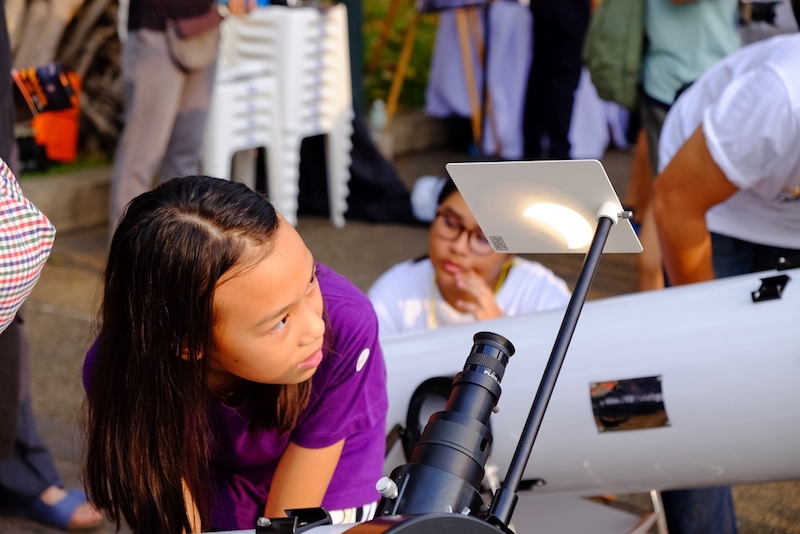How to Explain the Total Solar Eclipse to Your Kids

With less than a week to go before the "Great American Solar Eclipse" on Aug. 21, interest in the celestial event is reaching a fever pitch. And if you're a parent who cares about science, but you won't be able to view the eclipse along the path of totality with your kids, you may be starting to feel some "eclipse guilt." But don't fret.
There's a simple way to explain the phenomenon to your kids, and you can enjoy even simpler ways to experience the partial eclipse, said Amy Mainzer, an astrophysicist at NASA's Jet Propulsion Laboratory in Pasadena, California, and a consultant for the space-themed PBS series "Ready Jet Go!"
"Act out the eclipse," Mainzertold Live Science. "Get yourself a couple of balls and a flashlight and go into the garage and see if you can make your own eclipse before it happens." [2017 Total Solar Eclipse: Everything You Need to Know]
Here's how to do it: First, make sure the room is dark. Have one person hold up a large beach ball to represent the Earth. A second person can turn on a flashlight to represent the sun, and a third person can hold a softball to represent the moon.
Begin by having the "moon" walk in circles around the "Earth." Now ask the "Earth" to walk in circles around the "sun" while the "moon" maintains its orbit. See if everyone can time it so that the moon passes between the sun and the Earth to create a shadow.
"It's silly fun, but it's a good way to visualize what's happening and get a sense for how it works — especially for young children," Mainzer said. "The idea is that the Earth is traveling around the sun here and the moon is traveling around the Earth, and sometimes they line up just right."
And on the day of the eclipse, try to experience it, Mainzer said. If you don't live along the path of totality, don't let the fact that you'll only see a partial eclipse keep you inside, she added. It will take the moon a couple of hours to pass in front of the sun, and there are many ways to see the different phases of the eclipse. Take precautions and don't look directly at the sun or the eclipse unless you have special eyewear that meets the safety standard of ISO 12312-2,Mainzer said. You can do a safety check using these tips from Space.com.
Sign up for the Live Science daily newsletter now
Get the world’s most fascinating discoveries delivered straight to your inbox.
But you don't need eclipse glasses to experience the solar eclipse. Another way to see its effects is to stand under a leafy tree and look at the crescent shadows on the ground in the spaces between the leaves, Mainzer said. She also suggested making your own shadows by crisscrossing your fingers into a waffle pattern, which produces a similar effect.
Another way is to make a simple projection device with two sheets of stiff, white cardboard, Mainzer said. You can use a pin or a nail to poke a hole in one sheet and then hold that one over the other sheet. Look at the shadow of the object on the paper. You'll see a projection of the sun as a dark spot, and the moon will appear as a crescent that grows larger and larger over time.
"The key here is that you don't need a lot of high-tech equipment," Mainzer said.
If you want to make a slightly more sophisticated projection device, you can visit NASA's Eclipse 2017 website. There are instructions for assembling a solar viewing projector using binoculars and a DIY solar viewer.
In the event that you can't get outside, or if cloudy weather obscures your view, you can also watch a live video feed of the solar eclipse on Space.com, beginning at 12 p.m. ET.
"I think the main thing is, just get out there and experience it," Mainzer said. "It's really an opportunity to be reminded of the big picture we fit into as human beings on Earth."
Original article on Live Science.










